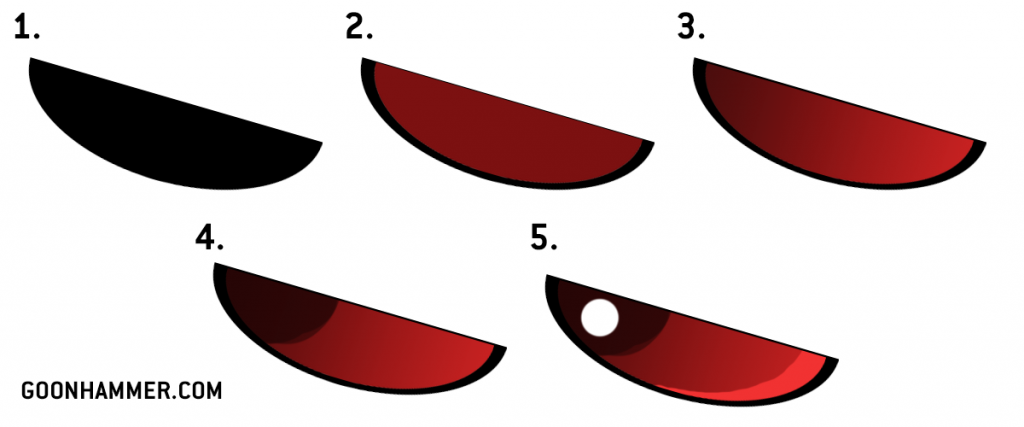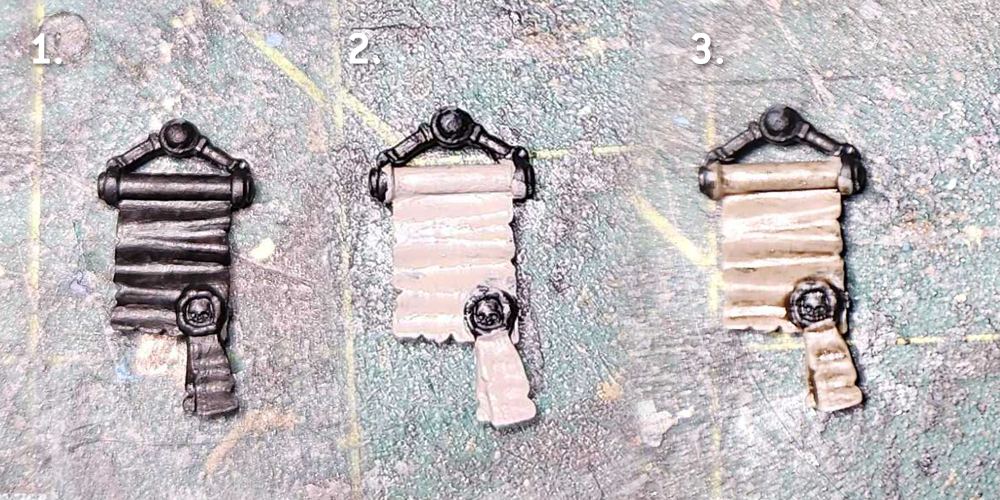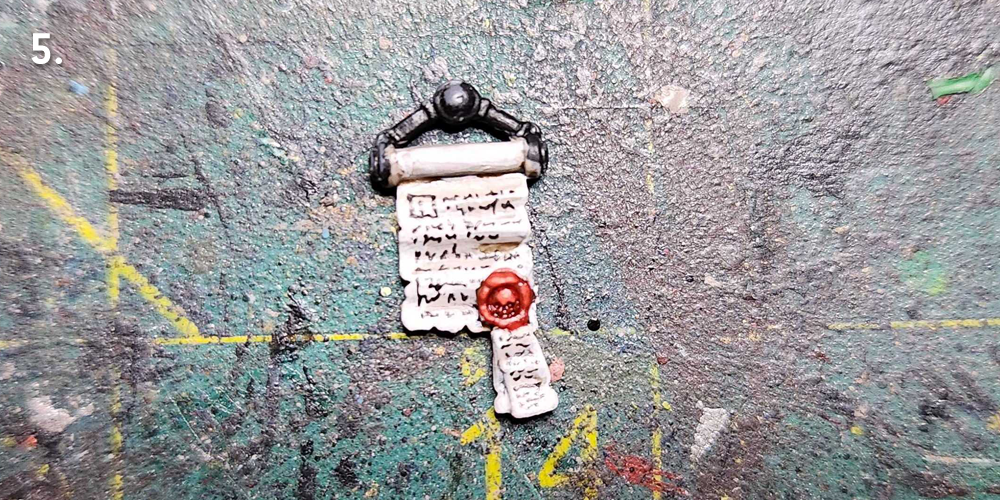In our How to Paint Everything Series we cover how to paint well, everything, with a look at different methods and techniques from different painters and with an eye for different skill levels. In this article, we’re covering how to paint Space Marines, the genetically modified warriors tasked with the protection of the Imperium of Man in Warhammer 40k.

The Space Marines are practically synonymous with Warhammer 40k, with the iconic look of massive warriors clad in power armor now defining the setting and its grimdark aesthetic. Space Marines have been the poster boys for the game since its earliest days, starting with the cover of Rogue Trader, which saw Crimson Fists squaring off against Orks.
Every single edition of Warhammer 40k has launched with a starter box featuring space marines squaring off against some other foe, ensuring that nearly everyone who plays the game will have at least a space marine or two sitting around their homes. They’re the game’s most popular army – at least in part due to this – and there are a ton of different ways to play them on the table and paint them.
The warriors of the Adeptus Astartes are broken into chapters, each roughly a thousand warriors (though that changed a bit with the Indomitus Crusade), all of whom can trace their lineage back to one of twenty first founding chapters. Of those, two were destroyed leaving no records and nine rebelled against the Imperium, turning to Chaos during the Horus Heresy – those are the Chaos Space Marine legions and they’re a different faction.
The remaining nine loyalist legions originally comprised thousands of marines but were split into a number of smaller chapters after the Heresy. While the first founding chapters stuck around, many new chapters were formed, each with their own color schemes, heraldry, and methods of warfighting. Over time these chapters have created their own lore, heroes, stories, and relics. And the number of chapters has increased as well – subsequent foundings have split chapters growing too large, expanding the number of marines. This is a great cover for hobbyists who want to create custom chapters – there’s plenty of reason for your marines and their paint scheme to exist.
On the tabletop, marines are largely split into chapters, though how these are defined in game rule terms has changed over the years. There are five “special” groups of marines – Black Templars, Blood Angels, Dark Angels, Deathwatch, and Space Wolves – who have their own Codexes, while the rest tend to be rolled up into some form of Codex: Space Marines.
Covered in this Article Series
- The basic elements of Space Marine models and how to paint them – from power armor to power swords to cloth and lenses.
- Links to the How to Paint article for each of the first founding chapters of Space Marines, from Blood Angels to Space Wolves.
- Links to the How to Paint Articles for the most famous successor chapters in the 40k lore, from Black Templars to Silver Templars.
- How to paint a number of custom Successor chapters, each with their own unique heraldry.
Common Visual Elements of Space Marines
While each chapter of space marines has its own unique color scheme and heraldry, there are a number of common and shared visual elements between them. Rather than repeat these in each article, we’re including a number of the most common elements here. Note that more chapter-specific elements like the Space Wolves’ fur pelts and frost weapons will still be in their chapter article.
 Gemstones and Lenses - Click to Expand
Gemstones and Lenses - Click to Expand

Scrolls and Purity Seals - Click to Expand

Power Swords - Click to Expand
 Heraldry - Click to Expand
Heraldry - Click to Expand
Painting Space Marine Chapters
There are nine first founding chapters of space marines – chapters founded during the Great Crusade which remained loyal to the Emperor – which are still around in Warhammer 40,000. Each of these has dozens or hundreds of successor chapters as they’ve been split up over the years and their gene-seed has been used to create new foundings of Space Marines. Each chapter has its own color scheme and quirks and deserves an article all its own – so that’s what we’ve done. Check the sections below for links to articles on how to paint specific marine chapters, both First Founding and Successor.

The first founding chapters are the modern-day versions of the nine legions of space marines which remained loyal to the Emperor. These are the big canonical chapters of Space Marines in the lore (though many successors also receive lots of mention). These are among the most complicated chapters of Space Marines from a painting standpoint, with tons of lore and heraldry. Many have codexes of their own.
First Founding Chapters - Click to Expand

There’s a massive number of space marine successor chapters in the lore of Warhammer 40k – too many to count or name – leaving players free to come up with their own chapters, each as plausible as the last.
Successor Chapters - Click to Expand
More to Come
That wraps up our look at how to paint Space Marines but with a faction this popular you can bet we’ll be updating this page periodically and adding more successor chapters and methods, including full sections for pre-Heresy marines, so check back in the future. And if you’ve got your own recipes or marines you want to share, or there’s a chapter your looking for us to cover, drop us a note in the comments below or email us at contact@goonhammer.com.
Want to support us and the creation of more paint guides and schemes? Support us on Patreon.
































